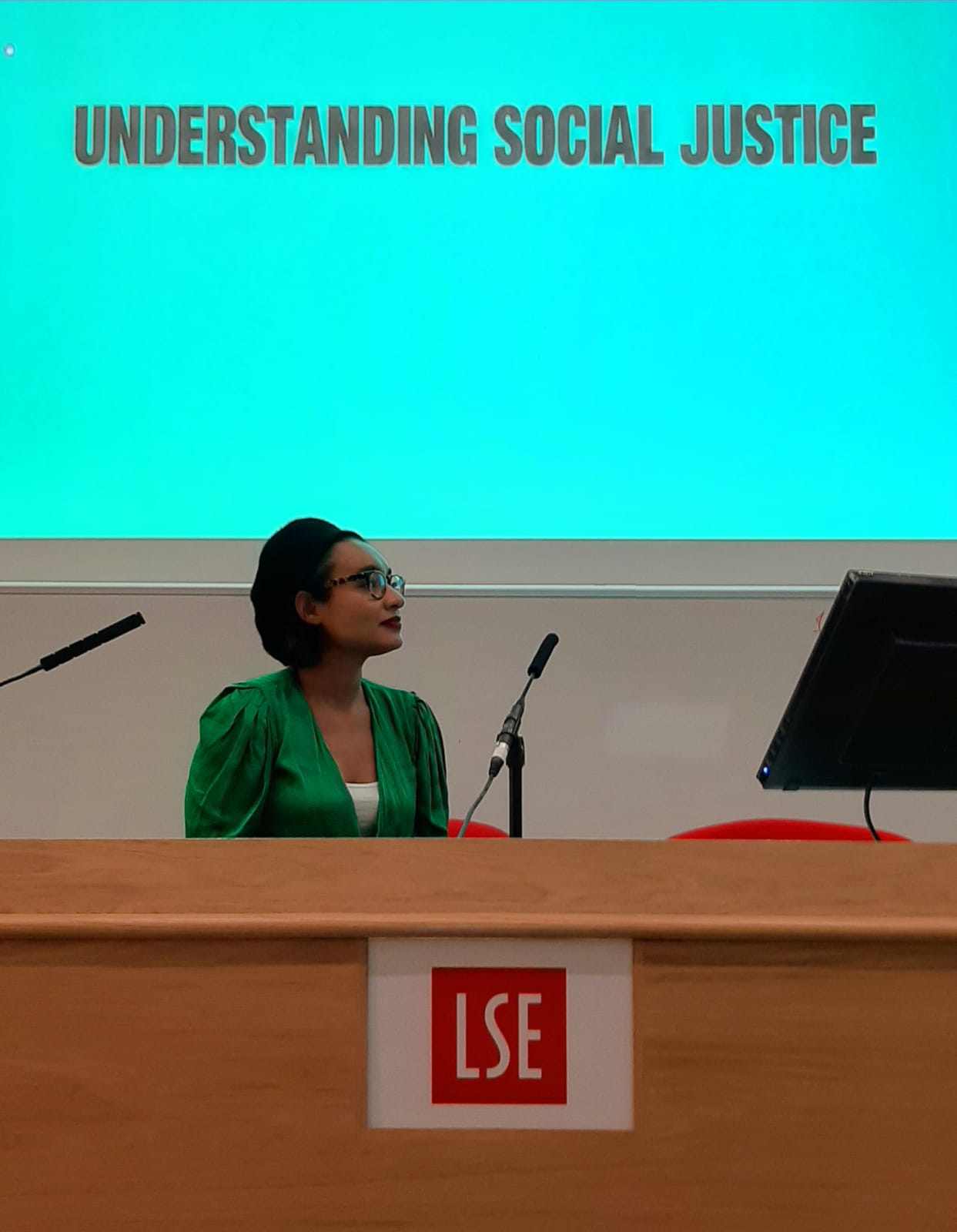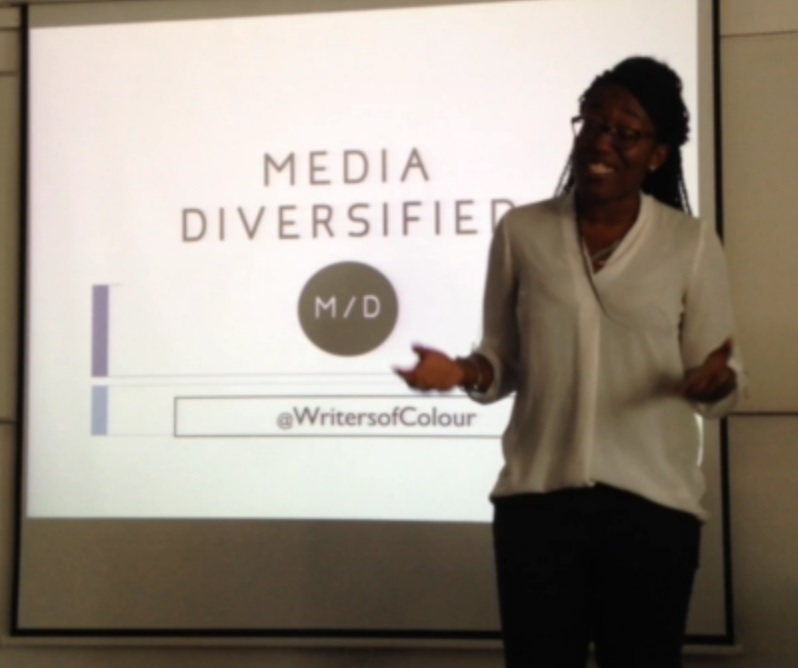In this article, POLIS/Journalistfonden Newsroom Fellow Karin Bromander looks at the conversations around diversity in newsrooms and what strategies are in place to diversify content. By interviewing 15 journalists from Sweden and the UK about how they experience the conversation around diversity at work, her report gives insights into how it is discussed at different levels in media organisations. Here we present the first of two excerpts from Karin’s article, along with a link to the full document below.
DOWNLOAD THE RESEARCH ARTICLE HERE
Newsroom policy and diversity
There appears to be a palpable variation in how much weight the question of diversity is given in newsrooms today, as well as in what editors compared to reporters feel are being done. Whereas an editor of a magazine says she “can’t imagine there’s a single media organisation not giving this a high priority right now”, several of the reporters interviewed say diversity is hardly ever discussed in their workplaces. What efforts these reporters are putting in to improve the diversity of their content, are something they do very much on their own, or in conversations with their colleagues. This seems to be the case for larger organisations as well as smaller ones.
A reporter fresh out of university, working at an entry-level position in broadcasting, says she’s never heard anyone talk about it in the office. Some say conversations about diversity only ever takes place between colleagues in corridors, never in official meetings and rarely initiated by management. Two of the interviewees say diversity is something they hardly ever think about, and that for it to have a place on their daily agenda their editors would have to take the initiative and allocate the time, as well as introduce them with ways of addressing it. Others feel they try their best, but lack support.
“It’s a 100 per cent an insular thing, something that I practice on my own. There’s no real rule in place or any kind of guidance in general doing that. There have definitely been conversations when people are talking about specific stories – someone will say it’d be good if you speak to someone who has this or that background. There might be a conversation between colleagues or between editors and writers but there is no structure to it.” – Online news reporter
There is also a clear difference in how deep the conversation about diversity goes. Most of the interviewees say it stops at talking about the importance of representation. Few recall having discussions on methods in diversifying your work, such as ways of finding a diverse pool of sources or interviewees.
Two of the three people interviewed who are in managerial positions say diversity is the top priority in their organisations, though one of them confesses their diversity work is probably not yet felt or seen by all of the staff. The other one says it runs through all they do at magazine where she works.
“We’re constantly thinking about how our journalism is reflecting what our audience is interested in. You need to diversify the conversation; in the office as well as with the audience. I suppose that’s something which takes an enormous part of our effort in diversifying our working practice.” – Magazine editor and reporter
In a 2020 study by the Reuters Institute for the Study of Journalism, leading news executives as well as heads of journalism schools in Germany, Sweden and the UK were interviewed about their current work with diversity, in hiring new talent as well as the making of the news. The researchers conclude that all of the interviewees show concern and interest in attracting and retaining a mix of talent, as well as for their product to appeal to a more diverse audience, but that there appears to be much less commitment to initiate actual changes leading to more diversity. ”Very often, diversity is treated as a ’nice-to-have’ issue rather than a ’must-have’ for newsrooms and journalism schools,” the authors write. This paradoxical interest-combined-with-non-commitment is something very much felt by reporters interviewed for this piece. Several interviewees feel that though the importance of finding a diverse pool of sources is definitely being discussed, they’re never allowed the time or tools to do so.
Discussing Diversity
None of the freelancers interviewed for this piece can recall ever having a discussion with an editor about diversity, though they both would very much welcome it. Their work is something they very much do on their own, and they’ve figured out their own methods in how to diversify it. Both feel their skills development is something separated from their client–freelance relationship.
“I’m part of a network of journalists covering the same issues as I am, our stories fall under the same umbrella. There’s a conversation there. Right now one of the things we are talking about is complicating the narrative: How you ask questions; are you actually listening; are you making assumptions about your interviewee. That conversation really helps.” – Freelance journalist specialising in social issues
A journalist who now works for a large newspaper with a significant social media output, recently went back to school to study social media after having worked as journalist for a few years. He says he was shocked at how little diversity was addressed there as well:
“At university we talked about reaching different niches, about the problems in engaging different communities. But it was never in terms of diversity, or at least not in addressing the diversity of society. It was on a smaller scale. A niche could be defined as a small group, like we’d talk about how to reach the gaming community. But black people are not a small group, it’s not a niche. It’s a huge community that the media is missing out on.”
One reporter interviewed reflects the view of the executives, confirming that in some places diversity work runs through the organisation and doesn’t just stay as a conversation on management level:
“It’s now a kind of founding principle where I work. If you try as hard as possible to have a story come from several different angles you’re more likely to have a story that resonates with more people. And it’s more likely it will resonate with people from minority groups and of different ages, so we’ll have a bigger chance of reaching a wider audience.”- Broadcast reporter
The same reporter mentioned that the initial conversation in the last place he worked, in online media, didn’t come from management though, but from the readers. This perspective is something that shouldn’t be forgotten in the discussion, he says:
“I think a good way of looking at it is not just top to bottom, not only if it comes from the leadership or the reporters on the ground, but from an outside-inside perspective. The reason we started looking at these issues was an increased pressure from our readership. Since then, a lot of work has been initiated from the editors, but the origin was pressure from the outside.”
No matter the conversation at your own place of work, all of the interviewees feel something definitely has happened in the past 5-10 years, diversity is generally being talked about more now than it used to be. And that slowly, first steps are being taken in trying to balance journalistic content.
What to do about diversity
All of the interviewees who say their workplace has any sort of structured work with diversity say it started with some kind of content audit, specifically what is sometimes referred to as “counting heads”, to look at an issue of a magazine or a certain number of broadcasts and count how many men/women, white/people of colour, etc are featured, and in which role. This appears to be a rather new practice for many media organisations, according to the interviewees – many say they first encountered it sometime in the last 5-10 years, either with their current employer or at the last place they worked. It seems to quickly have become common routine though, about two-thirds of the journalists interviewed say it is practiced in some form where they now work. In fact, many larger news organisations, such as Dagens Nyheter and the Financial Times, now say they use gender bots to track how many female or male experts and sources are quoted.
An editor-in-chief for digital operations for a group of regional newspapers says of their offices recently made their first big content audit. The results showed coverage consisted of positive stories featuring mostly men, predominantly white and middle-aged, whereas people of colour, in the period of time they choose to audit, were only featured in court stories:
“And once you’ve learned that, you can start changing it. You can look at the news list and say ‘Who are we representing here and how are we representing them? How are we going to recruit people to come and be journalists if the only thing they see from us is negativity?’ If you are black, if you live on a council estate, and the only time you see your local news brand representing something you can relate to, it’s about crime or about how dreadful the area that you live in is.”
This perspective, that you audit the content and then develop a plan on how to improve your work based on the data you’ve collected, is what several of the interviewees wish for but feel like they’re not always getting. In some places, the procedure stops at counting:
“I don’t know if we have a strategy… We have a goal. We say we should have at least 14 articles a week where a woman is the main character, not just with a photo of a woman. I’m not sure how many articles we put out each week at the moment, but the goal is 14. If we don’t have that, we work to get it.” – Technology reporter, online magazine.
Interviewees working in places where they state diversity work has a more pronounced role call the practice a “tick-boxing exercise”, giving it a certain negative connotation. It’s a useful tool, but a crude one; an important first step to kick off progress, but that it should be just that – a first step:
“I think it’s really important that there are some very early steps being taken, some of them are tick-boxing exercises but still meaningful. They can be necessary to begin with, but there really needs to be structural changes for anything to actually change.– Investigative reporter, non-profit organisation
The burning question is of course what you choose to do with the information you get out of the content audit. Some of the interviewees express frustration in the lack of a plan or system: if there is a goal, they are not given any resources or suggested methods to reach it. There is no structure in how to achieve a better balance in who’s featured, just the knowledge of a gap and everyone now knowing they need to “do something about it”. Few say they have discussions on actual methods in finding sources or interviewees. Some say they’ve never had it, not with editor nor with colleagues.
This paper was produced as part of the POLIS/Journalistfonden Newsroom Fellowship scheme, where a Swedish journalist gets to spend a month at LSE researching a topical issue in the news media. It was edited by POLIS Director, Professor Charlie Beckett. The views expressed in this paper are those of the author and do not necessarily represent the views of POLIS or LSE.






